Kamakura
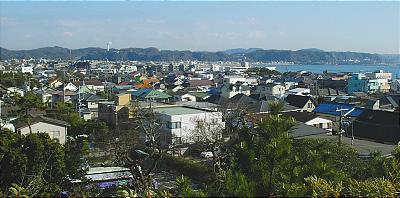
Kamakura is a coastal town in Kanagawa prefecture, less than one hour south of Tokyo.
Kamakura became the political center of Japan, when Minamoto Yoritomo chose the city as the seat of his new military government in 1192. The Kamakura government continued to rule Japan for over a century, first under the Minamoto shogun and then under the Hojo regents.
After the decline of the Kamakura government in the 14th century and the establishment of its successor, the Muromachi or Ashikaga government in Kyoto, Kamakura remained the political center of Eastern Japan for some time before losing its position to other cities.
Today, Kamakura is a very popular tourist destination. Sometimes called the Kyoto of Eastern Japan, Kamakura offers numerous temples, shrines and other historical monuments. In addition, Kamakura's sand beaches attract large crowds during the summer months.
Daibutsu
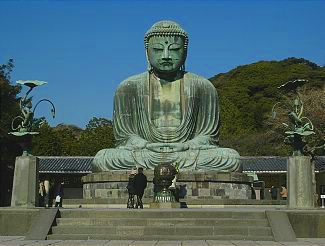
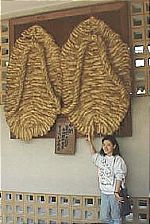
The Great Buddha of Kamakura is a bronze statue of Amida Buddha that is located on the grounds of the Kotokuin Temple. With a height of 13.35 meters, it is the second largest Buddha statue in Japan (the largest is located in the Todaiji Temple in Nara).
The statue was cast in 1252 and originally located inside a large temple hall. However, the temple buildings were washed away by a tsunami tidal wave in the end of the 15th century, and since then the Buddha stands in the open air.
The Great Buddha is located a 5 minute walk from the Enoden Railway Hase Station, the third station from Kamakura main station. The Enoden is a streetcar-like train that connects Kamakura with Enoshima and Fujisawa. Its terminal station in Kamakura is located just west of JR Kamakura Station.
Tsurugaoka Hachimangu
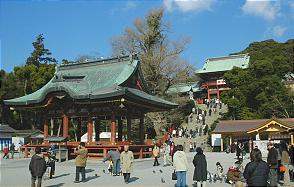
Tsurugaoka Hachimangu is Kamakura's most important shrine. It was founded by Minamoto Yoriyoshi in 1063, and enlarged and moved to its current site in 1180 by Minamoto Yoritomo, the founder and first shogun of the Kamakura government.
The shrine is dedicated to Hachiman, the patron god of the Minamoto family and of the samurai in general. The deified spirits of the ancient Emperor Ojin who has been identified with Hachiman, Empress Jingu and Emperor Chuai are enshrined in the main buildings of the Tsurugaoka Hachimangu Shrine.
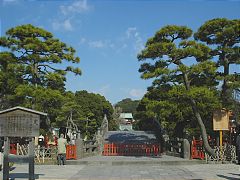 | 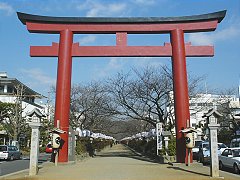 |
The treasure house, which is a museum featuring the valuables owned by the shrine, and a park with ponds are located next to the main buildings.
Various events are held at the shrine throughout the year. During the New Year holidays, Tsurugaoka Hachimangu is with over 2 million visitors one of the country's most visited shrines, and in April and September, horseback archery (yabusame) is performed on the lane that leads to the shrine's dance stage and main building.
The Tsurugaoka Hachimangu Shrine can be reached from Kamakura Station either through the busy Komachi-dori shopping street, or along the Dankazura, a pedestrian path in the center of Wakamiya Oji street that is lined with several hundreds of cherry trees. The walk from Kamakura station takes about 10-15 minutes.
Hase Temple
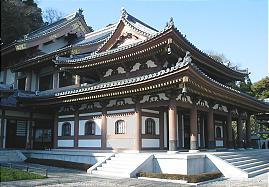

Hase Temple is a temple of the Jodo sect, that is most famous for its statue of Kannon, the goddess of mercy. The statue shows Kannon with eleven heads, each representing a characteristic of the goddess. The 9.18 meter tall, gilded wooden statue is regarded as the largest wooden sculpture in Japan, and can be viewed in the temple's main building.
Visitors to Hase Temple can enjoy a great view of the coastal city of Kamakura from the terrace next to the temple's main buildings. There is also a small restaurant where Japanese sweets such as mitarashi dango, small rice flour dumplings covered with a sticky sauce made of sugar and soya sauce, other small meals and beverages are served.
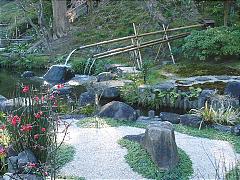 | 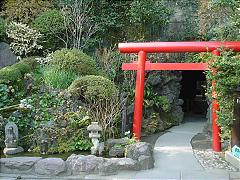 |
Next to the temple garden and the pond stands the Bentendo, a small hall that contains a figure of Benten (or Benzaiten), a goddess of feminine beauty and wealth. Sculptures of Benten and other minor gods can be found in a small cave (Bentenkutsu) next to the Bentendo.
Hase Temple is located a 5 minute walk from the Enoden Railway Hase Station, the third station from Kamakura main station. The Enoden is a streetcar-like train that connects Kamakura with Enoshima and Fujisawa. Its terminal station in Kamakura is located just west of JR Kamakura Station.
Kenchoji Temple
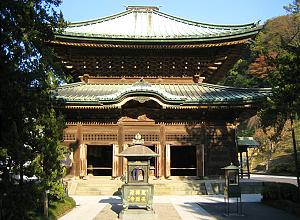
Kenchoji is the main temple of the Kenchoji school within the Rikai sect of Zen Buddhism. It is the number one of Kamakura's five great Zen temples.
Kenchoji was founded by Hojo Tokiyori in 1253. It is one of the oldest Zen temples of Japan, and the first one built in Kamakura. Its first head priest was Rankei Doryu, a Zen priest from China.
Behind the main hall (Hojo), a nice zen garden can be found. The temple bell (Bonsho) has been designate a national treasure.
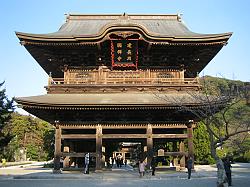 | 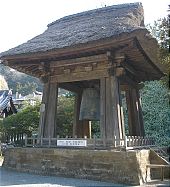 |
Kenchoji is a 10-15 minute walk from Kitakamakura Station on the JR Yokosuka Line, one station before Kamakura Station when arriving from Tokyo.
Engakuji Temple
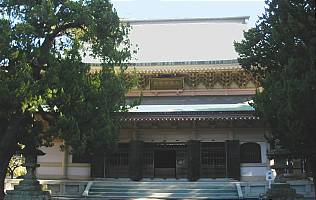
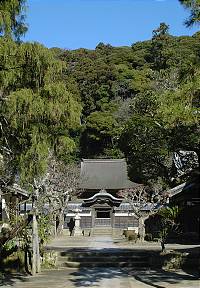
Engakuji is the main temple of the Engakuji school within the Rikai sect of Zen Buddhism. It is the number two of Kamakura's five great Zen temples.
Engakuji was founded by Hojo Tokimune in the year 1282, one year after the second invasion attempt by the Mongols was reverted. One purpose of the new temple was to pay respect to the fallen Japanese and Mongolian soldiers.
The Shariden, a shrine where a tooth of Buddha is enshrined, is located on the temple grounds, but it is not accessible to visitors during most of the year. The building has been designated a national treasure.
Another national treasure to be found at Engakuji is the temple's large bell (ogane). It stands on a hill next to a teahouse where visitors can enjoy a cup of tea or sake in a calm and beautiful environment.
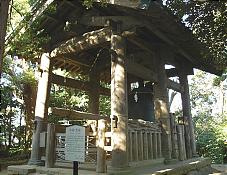 | 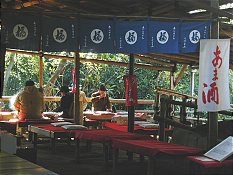 |
Engakuji is a few steps from Kitakamakura Station on the JR Yokosuka Line, one station before Kamakura Station when arriving from Tokyo.
Jufukuji Temple
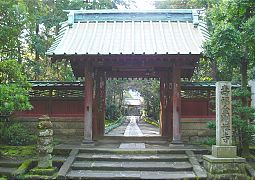
Jufukuji is the number three of Kamakura's five great Zen temples. It is a branch temple of the Rikai sect's Kenchoji school.
Jufukuji was founded by Minamoto Yoritomo's wife Masako after her husband passed away, and by priest Eisai who introduced Zen Buddhism into Japan and is the founder of the Rikai sect.
Jufukuji is located 5-10 walking minutes north of Kamakura Station, close to the railway tracks. There is no bus stop nearby.
Jochiji Temple
Jochiji is the number four of Kamakura's five great Zen temples. It is a branch temple of the Engakuji school of the Rikai sect of Zen Buddhism. Its head temple, the Engakuji Temple, can be found just a few hundred meters away on the opposite side of the railway tracks.
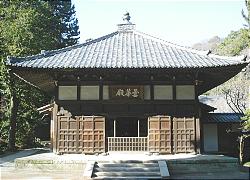
Jochiji was founded in 1283 by Hojo Morotoki. Three wooden statues of Nyorai can be viewed in the main hall (Dongeden). At the temple's entrance, one of the ten celebrated wells of Kamakura can be found.
Jochiji is a 5 minute walk from Kitakamakura Station on the JR Yokosuka Line, one station before Kamakura Station when arriving from Tokyo.
Zeniarai Benten Shrine
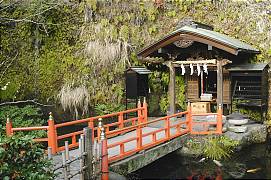
Zeniarai Benten Shrine is a popular shrine in western Kamakura, where people flock in order to wash their money (zeniarai means "coin washing"). It is said that money washed in the shrine's spring, will double.
Minamoto Yoritomo, the founder of the Kamakura government, ordered the shrine's construction after a god appeared in his dream and recommended him to build the shrine in order to bring peace to the country. Because the dream occurred on the day of the snake, in the month of the snake of the year of the snake, the shrine was later also dedicated to Benten, a Buddhist goddess associated with snakes.
Zeniarai Benten Shrine is a nice surviving example of the fusion of Buddhism and Shinto. Many other shrines were stripped of their Buddhist connections when the Meiji government attempted to emancipate and separate Shinto from Buddhism.
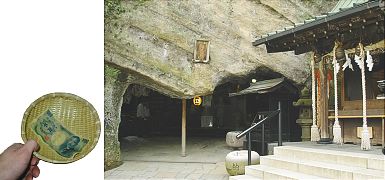
Zeniarai Benten Shrine is located about 15-25 walking minutes west of Kamakura Station. There is no bus station or other famous attraction nearby. However, the shrine is just a few steps from the hiking trail which connects Kitakamakura (North Kamakura) with the Great Buddha.
Zuisenji Temple
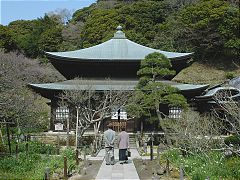
Zuisenji is a beautiful Zen temple in the far east of Kamakura, surrounded by wooded hills. It is a branch temple of the Rikai sect's Engakuji school.
Zuisenji was founded by Zen priest Muso Kokushi, one of Japan's most famous garden designers. The temple is known for its pure Zen rock garden which was designed by Muso himself, but also for the many flowers and blooming trees found in the other parts of the temple grounds.
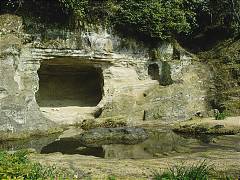 | 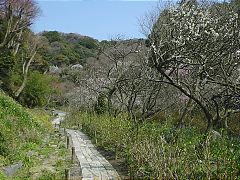 |
Zuisenji is located in the far east of Kamakura, rather distant from Kamakura Station.
By foot: It takes about 30-45 minutes to reach Zuisenji by foot from Kamakura Station, and about 20-30 minutes from Hachimangu Shrine. It can also be reached via a nice hiking trail that starts at Kenchoji and leads through the wooded hills in about 60-90 minutes.
By bus: The closest bus station is at Kamakura-gu Shrine. From there, the temple can be reached by foot in about 5-15 minutes.
Tokeiji Temple
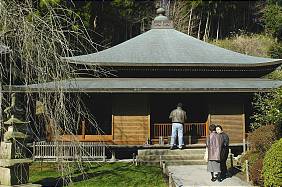
Tokeiji is a branch temple of the Engakuji school of the Rikai sect of Zen Buddhism. Its head temple, the Engakuji Temple, can be found just a few hundred meters away on the opposite side of the railway tracks.
Tokeiji was founded by Hojo Tokimune's wife in 1285 after Tokimune had died at a young age. The temple became most famous as a shelter for wives who were abused by their husbands and wished to become divorced.
While it used to be easy for a man to divorce his wife, it was much more difficult for a woman to divorce her husband before the Meiji Period. However, at Tokeiji women could become officially divorced by staying there for three years.
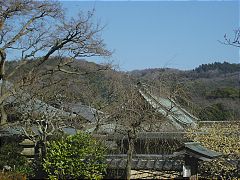 | 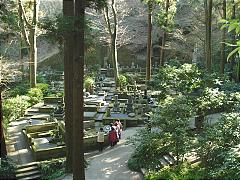 |
Tokeiji is a 5 minute walk from Kitakamakura Station on the JR Yokosuka Line, one station before Kamakura Station when arriving from Tokyo.
Ankokuronji Temple
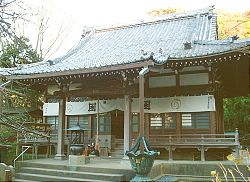
Ankokuronji is one of several temples of the Nichiren sect of Japanese Buddhism along the hills in the southeast of Kamakura. Nichiren himself founded Ankokuronji around 1253 when he first came to Kamakura, and he is said to have lived at the temple for several years.
Visitors can walk along a short hiking trail through the wooded hills around the temple buildings. A nice view of the city of Kamakura can be enjoyed underway. Some of the trail's passages are quite steep and should only be explored with good walking shoes and during dry weather.
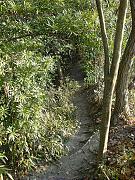 | 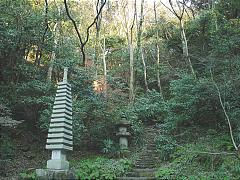 |
| On a walk through the temple's wooded hill areas | |
Ankokuronji is a 15-20 minute walk from Kamakura Station.
Myohonji Temple
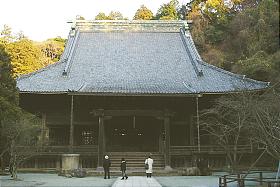 | 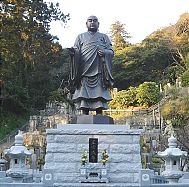 |
Myohonji is one of several temples of the Nichiren sect of Japanese Buddhism along the hills in the southeast of Kamakura. The temple was founded by Hiki Yoshimoto in 1260, and features a statue of Nichiren.
The temple is connected via a hiking trail with some other nearby temples and a shrine. It leads through the wooded hills of Kamakura, and should be explored only with good walking shoes and during dry weather, because there are a few steep and rough passages.
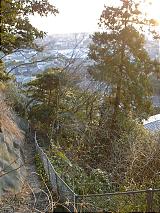 | 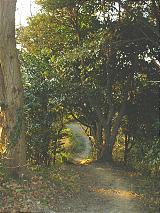 | 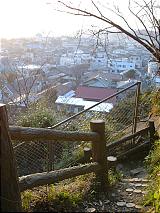 |
| Hiking trail | ||
Myohonji is a 10-15 minute walk from Kamakura Station.
Beaches
Kamakura lies at the coast of the Pacific Ocean. Large beaches are located just about 10 minutes from Kamakura Station by foot. The beaches are very popular during the hot summer months when they are crowded not only with locals but also with visitors from the close Tokyo/Yokohama area.
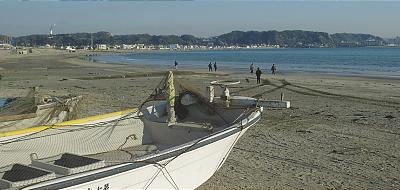
The beach is a 10 minute walk from Kamakura Station.
Hinking Trails
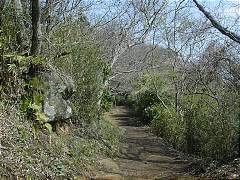 | 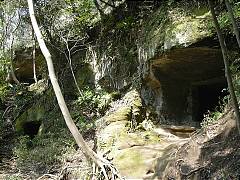 |
Kamakura is surrounded by the ocean in the south and by wooded hills in all other directions. Beautiful hiking trails lead through the woods along these hills and connect various athmospheric temples.
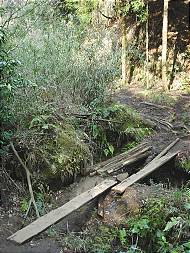
Western hills: A hiking trail connects Kitakamakura with the Great Buddha. The Zeniarai Benten and a public park can be found underway. The trail starts at Jochiji Temple in Kitakamakura, and it takes about 60-90 minutes to walk to whole distance.
Northern hills: A hiking trail connects Kenchoji with Kakuonji and Zuisenji. The whole distance takes about 60-90 minutes, and hikers can find several several tomb caves (yagura) along their way.
Eastern hills: A hiking trail connects the Myohonji Temple, Yagumo Shrine and the Harakiri Yagura, a cave tomb where the remains of the last Hojo regent are burried. Some great views of the city can be enjoyed underway.
The trails are narrow and steep at times, and it is recommended to explore them only during dry weather and with good walking shoes.